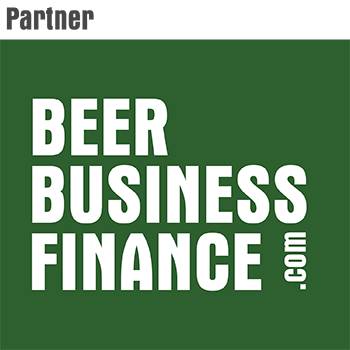 “Never underestimate the value of cold cash.” -Gregory Nunn
“Never underestimate the value of cold cash.” -Gregory Nunn
One of the scariest things that can happen in business is running out of cash.
Cash is the fuel that keeps the brewery going, and without it, the gears come to a grinding halt. You can’t pay your employees or your vendors (let alone yourself). Without cash, you are dead in the water.
For many craft breweries, this fear is a daily reality.
There’s nothing worse than lying awake at night, staring at the ceiling and wondering whether you’ll be able to make payroll this week.I’ve experienced it many times, and it’s an awful feeling.
What if you could have cash available when you need it? What if you could sleep like a baby, no worries about bouncing checks or holding off on paying vendors?
No, I’m not a loan shark, but I do have an idea that can help: a working capital line of credit.
In this article, I will review the nuts and bolts of cash flow planning. I will show you how to set up a working capital line of credit so that you can make payroll, pay your vendors, and not have to worry about running out of cash again.
You have enough things to worry about in your brewery, running out of cash doesn’t have to be one of them.
- Learn that sales growth doesn’t equal cash growth. Fast sales growth = Fast cash burn.
- Plan for the Cash Burn: An Intro to Basic cash flow planning.
- How to put a working capital line of credit in place.
Fast Growth = Fast Cash Burn
There is a huge misunderstanding in the brewery world (and the business world in general) that sales growth is the same as cash growth. It’s not.
Sales growth consumes cash. Inventory grows, and so does your accounts receivable. Inventory is cash sitting in your brewery in the form of raw materials and finished products. Accounts receivable is money that your customers owe you. Unfortunately, customers don’t always pay on time. Sometimes, they don’t pay at all.
Sales growth requires additional investments in people, equipment and supplies to keep up. This drives up the cost of your operating expenses and financing expenses (more debt, more interest expense).
Let’s just say that sales growth is great, but it comes with a big increase in expense that you need to be aware of and need to plan for.
Basic Cash Flow Planning
Understanding that sales growth is not the same as cash growth is a good start. The next step is to do some basic cash flow planning for your brewery.
The cash flow plans that I’ve found most helpful begin with a projected income statement. Map out your expected sales, gross margins, and operating costs. This will give you anticipated net income.
Take your net income and add or subtract cash items that don’t show up on the income statement. In other words, you need to look to the balance sheet to see what changes you expect with your assets and liabilities.
Stay with me, this will start to make more sense in a second.
For example, if you have debt and make monthly payments, those payments are made up of interest and principal. The interest portion shows up on the income statement as interest expense. The principal portion shows up on the balance sheet as a reduction of the loan payable that is due.
In order to properly account for your expected cash flow, you’ll need to subtract the principal portion of the debt payment.
Another quick example has to do with accounts receivable. When you make a sale on credit, your sales goes up and your accounts receivable goes up. Note that you do not have any cash when you make the sale, that comes later when the customer pays.
So, for the basic cash flow planning you will need to subtract any expected increases in the accounts receivable balance. Again, this is because you recorded a sale (which makes its way into net income) but you didn’t get the cash yet (the customer didn’t pay and accounts receivable increased).
Many accounting programs can produce a cash flow statement automatically. Use this as a starting point for your cash flow planning.
How to Set Up a Line of Credit…So you Never Have to Worry About Running Out of Cash
Let’s start with a quick review of working capital line of credit basics.
A working capital or revolving line of credit is a loan that provides available cash when you need it. You may never need it, but you’ll sleep a lot better knowing that it’s there.
The term of the line of credit may renew yearly, or every two or three years. The credit remains open and available for you to draw upon as you need it.
The line of credit may be linked to your checking account using a ‘sweep to line’ arrangement. Think of this like over-draft protection on your personal checking account. Any over-drafts on the business account get taken care of by the line of credit.
Interest is charged on the outstanding balance (the principal). However, unlike a regular commercial term loan, there’s no monthly payment schedule. Interest is charged, and accumulates on the outstanding balance.
The interest rate may be based on Prime, LIBOR, or another internal bank interest rate measurement. A typical rate these days might be prime plus 2 or 3%. There may be a requirement for the line to be paid down to zero for a period of time each year, and remain at zero for 30 days.
The amount you can borrow on the line of credit will be determined by a few factors: how much you ask for, how much you really need, and how much collateral you have to support the loan.
You can determine your needs by looking at your historical cash flows over the past few years, and project what’s coming up.
The bank may look to your inventory and accounts receivable for the collateral on the loan. They may lend 50% to 60% of your total inventory value and 60% to 70% of your accounts receivable. Depending on the amount of those assets, this can be a good chunk of credit available when you need it.
As with any open-ended credit (like credit cards) you’ve got to be disciplined with it. Just because the bank will loan it to you, it doesn’t mean you should spend it all.
Now that the basics are covered, and you have some background on how a line of credit works, it’s time to schedule that appointment with your banker. He or she will walk you through the process, show you the options, and help you on your way to getting available cash when you need it.
Wrap Up + Action Items
Many craft brewery owners are afraid of running out of cash. If your bank account is low and you’re struggling to make payroll, a working capital line of credit may be a good solution.
Start with an understanding that sales growth is not the same as cash growth. In most instances, sales growth will consume a lot of cash. You’ll need to invest in more people, equipment and supplies to maintain sales growth.
Put together a basic cash flow plan. Project your income, then subtract other items that consume cash – debt payments, equipment purchases paid in cash and increases in accounts receivable.
Set up a meeting with your banker to talk about a working capital line of credit. Review this article so you understand the basic parts of the loan, and you’re prepared to ask questions.
There’s no need to endure any more sleepless nights worrying about running out of cash. Get a line of credit in place, and sleep tight.





